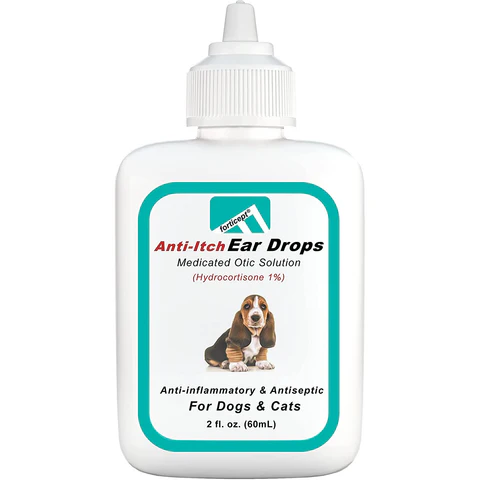Dog ear infections can be a common and uncomfortable ailment for our furry friends. From incessant scratching to foul odors, the symptoms can be distressing for both pets and their owners. Fortunately, there’s a solution that can provide relief: dog ear drops.
Here, we’ll explore the world of dog ear drops for ear infections, how they work when to use them, and essential tips for effective treatment.
Understanding Dog Ear Infections:
Before diving into treatment options, it’s crucial to understand what causes ear infections in dogs. These infections can stem from various factors, including bacteria, yeast, allergies, moisture buildup, or foreign objects trapped in the ear canal.
Breeds with floppy ears or excessive hair in the ear canal may be more prone to infections due to poor air circulation and increased moisture retention.
Symptoms of dog ear infections may include:
- Excessive scratching or rubbing of the ears
- Head shaking or tilting
- Redness or swelling of the ear canal
- Discharge or foul odor from the ears
- Sensitivity or pain when touching the ears
Introducing Dog Ear Drops:
Dog ear drops are specially formulated solutions to combat ear infections and alleviate associated symptoms. These drops typically contain a combination of active ingredients, such as antibiotics, antifungals, corticosteroids, and soothing agents.
When to Use Dog Ear Drops:
If you suspect your dog has an ear infection or notice any of the symptoms above, it’s essential to consult your veterinarian for a proper diagnosis. Your vet may recommend using ear drops as part of the treatment plan based on the severity and underlying cause of the infection.
Here are some instances when dog ear drops may be prescribed:
- Bacterial Infections:
Antibiotic ear drops are commonly prescribed to combat bacterial infections. These drops help eliminate harmful bacteria, reduce inflammation, and promote healing of the ear canal.
- Yeast Infections:
Antifungal ear drops effectively treat yeast infections commonly caused by an overgrowth of Malassezia organisms. These drops target and eliminate the yeast cells, restoring balance to the ear environment.
- Inflammation and Itching:
Corticosteroid ear drops may be prescribed to alleviate inflammation, itching, and discomfort associated with ear infections. These drops help reduce swelling and relieve symptoms, making your dog feel more comfortable.
Tips for Administering Dog Ear Drops:
Administering dog ear drops for ear infections may seem difficult initially, but it can become a manageable task with patience and practice. Here are some tips to help you administer ear drops effectively:
- Restrain Your Dog:
Gently restrain your dog to prevent sudden movements that may cause injury or spillage of the ear drops.
- Clean the Ears:
Before applying ear drops, gently clean your dog’s ears with a veterinarian-approved ear cleaner to remove excess debris and wax.
- Follow Instructions:
Carefully read and follow the instructions provided by your veterinarian or on the ear drop packaging. Pay attention to dosage, frequency of administration, and duration of treatment.
- Be Gentle:
Hold the ear flap up and gently massage the base of the ear to help distribute the ear drops throughout the ear canal.
- Reward Your Dog:
After administering the ear drops, praise and reward your dog with treats or affection to create a positive association with the experience.
Final Words
Dog ear infections can be uncomfortable and distressing for our canine companions, but with the right treatment, relief is possible. Dog ear drops offer a convenient and effective solution for treating ear infections and alleviating associated symptoms.
By understanding the causes of ear infections, recognizing the symptoms, and following proper administration techniques, you can help your dog find comfort and relief from ear infections. Consult your veterinarian for guidance and personalized treatment recommendations tailored to your dog’s needs.
